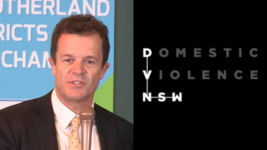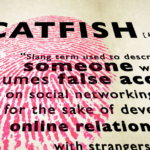Domestic Violence Group Warns Proposed Coercive Control Laws Could Escalate Abuse

Domestic violence organisations have been advocating for the criminalisation of coercive control, a series of behaviours that usually sees males acting emotionally abusive towards female partners, and often it occurs in an escalating manner prior to intimate partner homicides.
The NSW government has finally heeded the call, with the Crimes Legislation Amendment (Coercive Control) Bill 2022, which establishes a coercive control offence: abusive behaviour towards current or former intimate partners. And the bill already passed the state lower house on 19 September.
Coercive control, however, is not easy to identify, as it involves a variety of behaviours often with only the perpetrator and victim being aware that they’re occurring.
Indeed, the Speakman bill doesn’t even attempt to define coercive control and the nature of the context the practice usually occurs in.
And its due to the complexity of identifying this behaviour that women’s organisations, especially those representing First Nations women, have been calling on the AG to improve the legislation that he released in draft form in July, so it doesn’t escalate the issue, rather than serve to combat it.
But despite a 31 August letter from the NSW Women’s Alliance calling on the state’s chief lawmaker to reopen the consultation period on the draft laws, Speakman has introduced the bill and is now hellbent on seeing it gain assent by year’s end.
Flawed legislation
“There are a number of different ways to create this offence, and these constructions need to be hypothesised and tested with everyone in the legal system at the table, not in silos,” Domestic Violence NSW chief executive Delia Donovan told Sydney Criminal Lawyers.
“DVNSW is concerned that the bill sets a bar too high for providing proof,” she continued. “In practice, this may mean victim-survivors are unable to access justice for the harm committed against them and may result in the criminal legal system offering false hope and no delivery.”
The organisation is part of a coalition that warned the bill is flawed on its release. And Donovan asserts it could result in similar situations to those in Scotland, where the crime is so hard to prove that those who’ve reported it unsuccessfully, have then been subjected to an escalation of abuse.
The four main points of contention are the bill doesn’t define coercive control or the context in which it occurs, the crime only applies to intimate partners, insufficient attention has been given to how it aligns with apprehended violence orders and other orders of protection, and it will be incredibly hard to prove the offence.
“DVNSW recommends robust implementation, monitoring, and evaluation to ensure this legislation does not have any unintended consequences when it comes into effect,” said Donovan, adding a pre-implementation taskforce should inquire into it and whether current systems can handle it.
Enforcing laws through a racist lens
Whilst mainstream women’s groups nationwide have applauded governments moving towards criminalising coercive control that causes ongoing emotional trauma and often escalates into violence, First Nations women’s organisations have been hesitant about how they’ll impact them.
“By excluding all domestic relationships other than current or ex-intimate partners, the bill is excluding kinship violence in Aboriginal communities,” Donovan explained. It also has “the potential to over-criminalise” these communities, as have a range of other laws.
Wirringa Baiya Aboriginal Women’s Legal Centre was part of the coalition that warned of the issues with the legislation on the day it was released, along with DVNSW, Women’s Legal Service NSW and the Redfern Legal Centre.
Coordinator of Wirringa Baiya Christine Robinson set out in a recent piece in the Guardian that any “coercive control offence should not come before thorough cultural and systems reform, including police culture, police investigations, criminal court systems and support systems”.
Currently, a major issue for First Nations women experiencing domestic violence is that often when police are called out to such incidents involving them, attending officers will misidentify the victim, the Aboriginal woman, as the perpetrator and arrest them.
Robinson further pointed out that if First Nations women aren’t able to persuade police that they’re the victim during a domestic violence incident, what hope do they have in convincing officers that they’re experiencing “ongoing psychological abuse and economic abuse”.
Donovan advised that groups at a NSW Legislative Council committee inquiry on Monday discussed the issue of misidentification and suggested the provision of “legislative guidance on how to identify the person most in need of protection”, as other jurisdictions have done.
Recognising the harm
The DVNSW CEO has welcomed the attention that politicians from all parties have given to addressing coercive control in the community. NSW Greens MLC Abigail Boyd first introduced such a bill in June 2020, with Labor tabling its version three months later.
Speakman’s bill would insert section 54D into the Crimes Act 1900 (NSW) to create the offence of abusive behaviour towards current or former intimate partners intended to coerce or control, with the maximum penalty for this crime being 7 years imprisonment.
While no definition for coercive control is provided, proposed section 54F outlines a list of actions that constitutes abusive behaviour, including violence, threats, coercion, financial abuse, humiliation, the monitoring of someone, as well as the destruction of property.
“The criminalisation of coercive control has been called for by victim-survivors for a very long time,” Donovan continued, “particularly due to the educative function of legislation, which they believe, will demonstrate to the community the significant harm of this pattern of abuse.”
Prepping NSW police
According to Donovan, the more productive approach to dealing with coercive control would be to initially recognise it in civil protections, like apprehended domestic violence orders (ADVOs), as other jurisdictions have done. This, she asserts, would also assist in countering misidentification.
If such laws were accompanied by quality educative programs, she added, it would send a clear message that coercive control behaviours were not acceptable in the community. But she underscores that “our systems” need to be equipped as well, which would include law enforcement.
“The lack of system readiness can be seen in the NSW Auditor General’s 2022 report on police responses to domestic and family violence,” Donovan said in conclusion.
“These systems must be appropriately transformed before such complex legislation, which will require an entirely new way of policing.”







